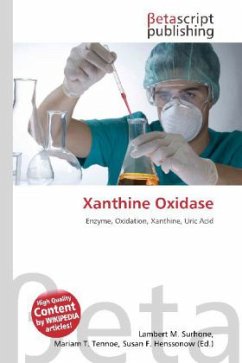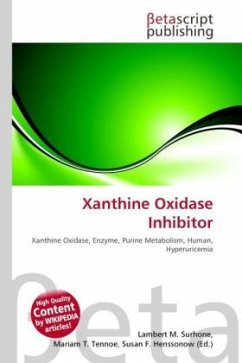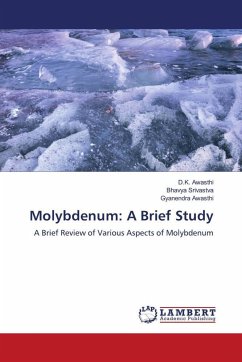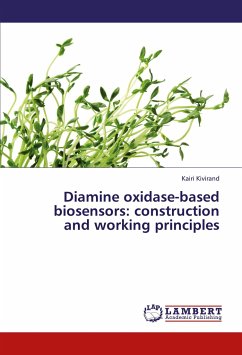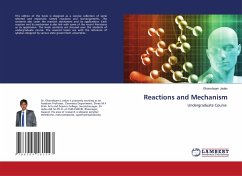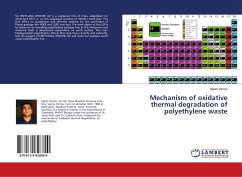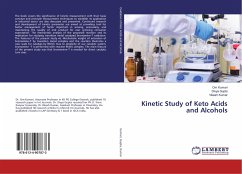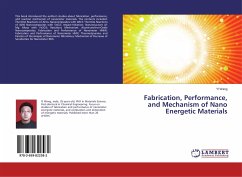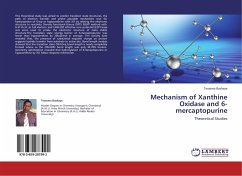
Mechanism of Xanthine Oxidase and 6-mercaptopurine
Theoretical Studies
Versandkostenfrei!
Versandfertig in 6-10 Tagen
32,99 €
inkl. MwSt.

PAYBACK Punkte
16 °P sammeln!
This theoretical study was aimed to predict transition state structures, the path of electron transfer and probe plausible mechanistic rout for hydroxylation of 6-mp or hypoxanthine with XO by relating the electronic structure to reactivity. Density functional theory (DFT)/ B3LYP method with 6-311G (d, p) full electron and LANL2DZ effective core potential (ECP) basis sets were used to probe the electronic structure of meta stable structure.The transition state energy barrier of 6-mercaptopurine was lower than hypoxanthine by 20kcal/mol in average. The ionicity data revealed that, the presence ...
This theoretical study was aimed to predict transition state structures, the path of electron transfer and probe plausible mechanistic rout for hydroxylation of 6-mp or hypoxanthine with XO by relating the electronic structure to reactivity. Density functional theory (DFT)/ B3LYP method with 6-311G (d, p) full electron and LANL2DZ effective core potential (ECP) basis sets were used to probe the electronic structure of meta stable structure.The transition state energy barrier of 6-mercaptopurine was lower than hypoxanthine by 20kcal/mol in average. The ionicity data revealed that, the presence of substantial negative charge on proton suggests hydride transfer from substrate to active site. Bond length analysis showed that the transition state CRH-Oeq bond length is nearly completely formed where as the CRH-HRH bond length was only 36.78% broken. Geometry optimization revealed that hydroxylation of 6-mecaptopurine or hypoxanthine by XO follow stepwise mechanism.



